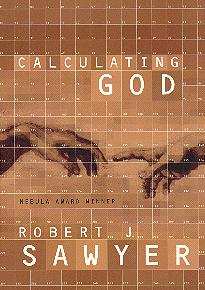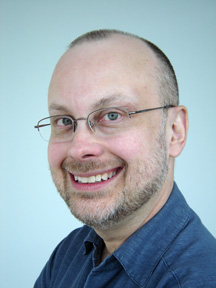Student questions about Calculating God

It's the time of year when high-school students are doing book reports. I'm always flattered when one of them chooses to do something about one of my books -- and sometimes the students send me questions, which I do try to answer. The set of questions below came to me from a 17-year-old grade-11 student, who had decided to do his Independent Study Unit on my year-2000 Hugo-nominated novel Calculating God.
The first question I have is about your writing process. I am interested to know what your writing process is. For instance do you first pick a theme, then a choose a setting, then create the characters, and finish off with the plot? Or do you have a different writing process?
I'm totally thematically driven. I decide what philosophical issue I want to tackle first, research that in depth, and only then create the characters. Even then, they're not locked in stone. I'd written the first 100 pages or so of Calculating God before it occurred to me to go back and give Tom Jericho (who was originally named Bob Jackson) cancer, as a way of giving him a personal stake in the philosophical issues.
The second question I have is on your writing style. For instance, do you try to use a lot of stylistic devices? Do you always use a certain perspective within your novel? Does your novels usually contain side stories? Is sci-fi the only genre you include, or is there other genres that are mixed in with your novels?
I try for a clear, clean, simple prose style, very much in the manner of my writing idols, Isaac Asimov and Arthur C. Clarke. Some of my novels are written from the third-person perspective, but for Calculating God I chose first person, because it made Tom's plight more immediate by letting us get inside his head. I definitely riff on works outside of the science-fiction genre, though; there's a lot in Calculating God that draws on the play Inherit The Wind, for instance. And I usually do have side stories or subplots, although there's not much of that in Calculating God.
My third question is on Calculating God. Where did you get the inspiration to come up with the setting, plot, themes, and characters located within Calculating God?
I was doing an enormous amount of reading about evolution and about criticisms of it (including Michael Behe's Darwin's Black Box: The Biochemical Challenge to Evolution), so, as always for me, the idea and theme came from my nonfiction reading. The setting was the Royal Ontario Museum simply because I always loved that place (and, indeed, like Tom, I was a member of the ROM's Saturday Morning Club as a kid, and the story of Tom making a Parasaurolophus marionette for a ROM contest really happened to me). Also, I'd become very interested in the idea of loyalty and friendship in adverse times, and wanted to explore that in a fictional context -- hence the relationship between Tom and Hollus.
My last question is taken from the third question in the Reading Group Guide on Calculating God located on the website sfwriter.com. Do you believe that science and religion should be completely separate? Or do you believe that science and religion are two sides of the same coin -- two different ways of explaining our world?
Actually, I believe that science trumps religion, and that ultimately only what's provable, real, nonsupernatural, and objective matters in the end. In this, I'm much more on the side of Richard Dawkins than Stephen Jay Gould. See my essay here.
(More about Calculating God)
The Robert J. Sawyer Web Site



0 Comments:
Post a Comment
<< Home